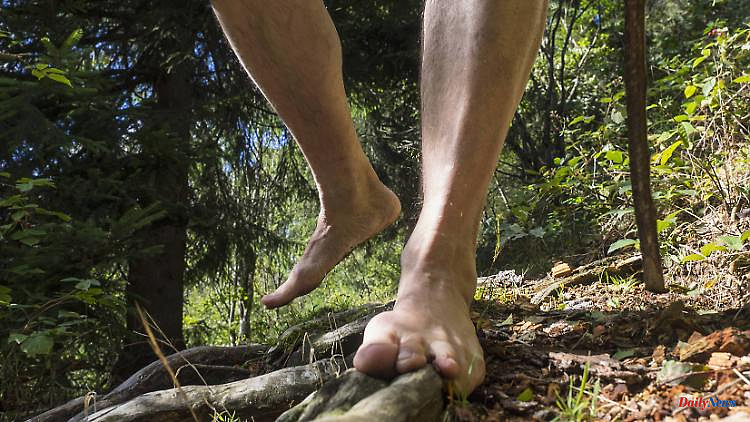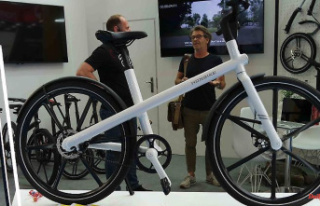Barefoot walking is becoming more and more popular. No wonder: it has a positive effect on the body and the psyche. A foot expert explains what to look out for.
Walking barefoot is not only a treat for the senses, but also has a positive effect on the body. The posture improves, the muscles are strengthened and the soles of the feet become less sensitive over time. Walking barefoot can also have a positive effect on the psyche. "When your feet are free, your soul and head are free," says Carsten Stark, foot expert and author of books like "Feet good, all good". In an interview, he explains what is important when walking barefoot.
What should you watch out for when walking barefoot?
Carsten Stark: Always have shoes with you. Possibly a washcloth to wipe your feet. Tweezers are also advisable. If you step on something, you can remove it immediately. People who are allergic to bees should not walk barefoot in a meadow. You should rather use minimal shoes to protect yourself from the danger. Ticks aren't really a problem. Because it takes six to eight hours to get infected. After the walk, check your legs for ticks.
How can walking barefoot be integrated into everyday life?
Many people go for a walk during their lunch break. Why not just take off your shoes? It lets you switch off from everyday life. When you walk barefoot, you don't think about anything else. You concentrate on the steps and your head clears.
So walking barefoot also has an effect on the psyche?
Especially now that we want to free ourselves from restrictions. When your feet are free, your soul and head are free. It is the cheapest and best way to mentally bring yourself back into a certain position of freedom - to reduce depression and think positively.
There are people who walk barefoot even in winter and autumn. But is that healthy?
People wouldn't do it if it hurt them. When the foot is freer, it has to work harder because it has less cushioning. As a result, he is better supplied with blood. People who put on barefoot shoes usually wear them all the time. The body adapts to it. But regularity matters. If you only wear them once a week, don't expect anything to change.
Barefoot paths are also in vogue at the moment. What can these do?
Paths like this have been around for 20 years. It is an artificially created nature. This is an attempt to invite people to try barefoot walking in a protected setting. You see it more as a kind of game, less as a way of life. But there is at least a chance that people will feel how good it is for them. So I can only endorse it.
Do you get more calluses from walking barefoot?
no For me, walking barefoot does not mean walking around the apartment with bare feet. But to move on natural ground. As a result, no cornea forms. Calluses are dead skin and are a protective function of the body. It builds up more protection against stress at these points. If you wear shoes that are too tight, you usually have calluses on your big toe. Because the toe is constantly pressing at this point. There are no pressure points when walking barefoot. In addition, the dead tissue sands itself off through the subsoil.
How does jogging look like, what should you pay attention to?
Start slowly and have several shoes ready. So different models from different brands. As a result, the foot is always loaded differently. It is best to take off your shoes before jogging and walk the first 200 meters barefoot. Finally, take off your shoes for the last few meters so that your feet can recover. Because jogging puts four to six times more stress on your feet. Absolute no-go: when jogging, only put weight on your forefoot and not put your heel down. This creates high tension in the calf and damages the muscles.
Carsten Stark is a foot specialist and has developed "foot cartography". With the method, a digital foot image is created with the help of a foot scanner in order to get to the bottom of the causes of complaints. In his Munich practice, he has been treating patients with foot, knee and back problems for years.
(This article was first published on Saturday, August 13, 2022.)












